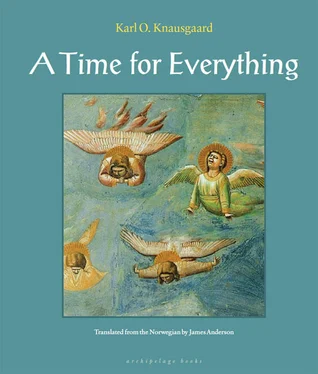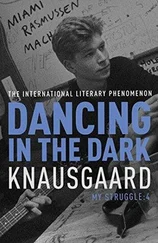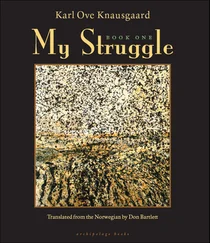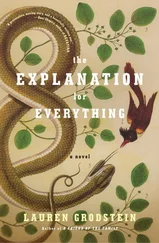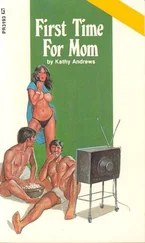The effects of the idea that had come to him on the doorstep spread down through all the sections, and everywhere it fit. This meant that it was correct. Fire wasn’t in a special category of its own outside the system, as he’d assumed. Fire was no exception. The other mistake he’d made was that he’d taken it for granted that the sun came under fire, and not the other way round. Once these two errors had been set right and the sun inserted into the system as “the living dead,” everything suddenly clicked.
All the time he’d concentrated on fire, he’d been unable to place it under “dead things.” The most important characteristic of dead things was that they consisted of nothing more than themselves, and that they couldn’t disappear. Fire, on the other hand, occurred only in combination with other things, and always disappeared. The fact that fire in each of its appearances might be the same fire each time, as he’d thought for a while, didn’t alter the dissimilarity: “dead things” had no such discontinuity in their existence. “Dead things” were uninterruptedly eternal.
But so was the sun. The sun was composed of nothing but itself, and it couldn’t disappear. The fact that the sun was active, that it both shone and heated and moved under its own power, in contrast to “dead things,” which were passive in every respect, had previously caused Noah to regard them as incompatible. He’d thought the sun was closer to “living things” than to “dead things” but as “living things” were transitory, it wasn’t living either. Then, the most tempting thing was to believe that fire and the sun were neither one nor the other but an entirely unique phenomenon.
The confusion arose because he’d given equal weight to all the characteristics of fire and the sun. As soon as he took one of them to be the main one, and viewed all the other characteristics in the light of it, it became possible to incorporate them into the system. If one of the lesser characteristics met resistance in another category, the main characteristic had been wrongly selected. After a few hours of this sort of trial and error, he managed to confirm the thought he’d had on the steps: the sun was the living dead. The main characteristic, to which all others were subordinate, was immutability. The sun was eternal. Therefore the life it had didn’t come from the living, but from the dead. Everlasting life was the life of the dead.
And in the same way as a limb from “living things” died as soon as it lost contact with the body (his father’s toe, cut grass, or a broken branch), while the body lived on, so parts of the sun died as soon as they lost contact with the parental body. These dead bits were fire. And just as an amputated limb had nothing more to do with living things, fire had nothing more to do with dead ones. Therefore it burned only the nondead, namely “living things” and “dead living things.”
But what then about its cessation? How could it be that fire ceased to exist when the most crucial characteristic of dead things was that they never ceased?
The explanation was simple. “Dead things” couldn’t die, they were eternal. But “the living dead” — the sun — could die, because part of it was in life. As this life was an inverted life (the life of the dead), death was also an inverted death, in the form of a wild reveling in living things and dead living things (conflagrations). This death didn’t end up as “dead things,” i.e., like all other living things, but in a dead things ’ death, which was “nothing.”
So now the main categories were:
LIVING THINGS
DEAD THINGS
GOD
THE SUN
NOTHING
All existence fell within these categories. The categories themselves were fixed, but the elements they contained moved between them. Neither “dead living things” nor “fire” were separate categories. They indicated states between categories, i.e., transitions. A human being belonged first to “living things.” When its life was extinguished — either in its entirety, if it died, or in its parts, when a limb was amputated — it moved to “dead living things,” which wasn’t a condition but a process, which ended with it being incorporated into “dead things.” Similarly fire was the transitional phase between “the living dead” — i.e., the sun — and “dead things’ death” — i.e., “nothing.”
This breakthrough with the sun as the living dead also meant that Noah could for the first time see a clear order in the system’s other, and until then somewhat ill-thought-out, categories, “living things in the living,” “life that resembles other life,” “living things in the dead,” and “dead things in the living.”
Once he’d added “the sun” and “nothing” to the system, and could see that it fit, he began considering the sun’s subcategories. They’d previously consisted of stars, cherubim, lightning, winter lights, conflagrations. But if fire was a process, “conflagrations” had to go. What of the rest? The stars burned eternally and by themselves, and therefore had to remain. The cherubim burned eternally and by themselves, so they had to be there too. Lightning occurred only in concert with clouds, and disappeared, so consequently had to be struck out. But winter lights? They disappeared and therefore came under fire, but also burned by themselves and so belonged under the sun.
When he arrived at this point, after many hours of success, he felt sick with frustration. Would it never work out! And it was always some minute, trivial, and completely unimportant point that stood in the way of the system’s perfection.
He jumped up and began pacing about in the room, stopped in front of the table by the wall, picked up some of the stones without thinking about what he was doing, lay down on his bed, closed his eyes. But he found no solution there. Only the yellow and green light that rippled above the mountains on dark winter nights.
It was doubly irritating, because his thought about the winter lights was what had set the whole thing in motion. And now the same subject was bogging it down.
What was it he’d actually thought?
Negative fire , was what he’d thought. That had been the flash of inspiration. Even though it had been wrong and winter lights weren’t negative fire, it was Nothing that fulfilled that role, it had given his thoughts the necessary perspective.
But wait!
He sat up in bed, looked across at the stones he’d just been holding in his hand. Fire burned hot, winter lights burned cold. And so he’d imagined they were inverted fire. A negative conflagration. But wasn’t it actually the same as the life in the stones? That was also cold. Why? Because it was only an image of life.
Winter lights were the image of fire. That’s why they burned cold. They resembled fire in the same way as the insects in the stone resembled insects, but they weren’t fire, they had none of the characteristics of fire, apart from appearance.
That was it.
That was it!
He sat down at his writing table again. If this was right, there were images within all categories, apart from Nothing. The formation of images permeated all existence. Just as comprehensively as life and death.
Tentatively he sketched in a new outline:
LIVING THINGS
DEAD THINGS
THE SUN
NOTHING
Dead living things
Fire
GOD
The force of life
The force of death
The force of image
At a stroke, all four categories that had caused him so much trouble — because deep down he’d known they weren’t valid, in the sense that they weren’t to be seen as separate entities, but in some way integrated within the greater picture — were swept away.
Читать дальше
